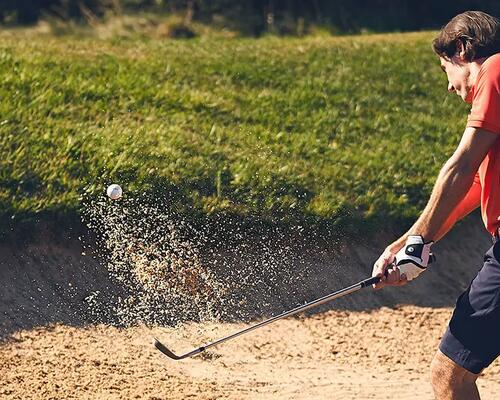The different types of grip
Having proper grip is the key to a strong golf swing. You want to have good control and stable hand positioning, yet relaxed enough that it still has a bit of give.
No matter what grip style you go with, start by holding the club in your left hand (for right-handed golfers). If you’re a leftie, switch these instructions to start with your right hand instead.
With your left hand (or lead hand) towards the top of the club, the grip should run diagonally across your fingers and into your palm. When looking down at the club, you should be able to see the knuckles of your index and middle fingers. You will then place your right hand (or trail hand) over the thumb of your left hand, towards the bottom part of the club’s grip. From here, there are the following common grip styles:
The 10-finger or baseball grip
In this grip style, all 10 fingers are on the club. While this is not common for professional golfers, this is often a more comfortable grip for amateur golfers and those with smaller hands. It is similar to how you would hold a baseball bat, and feels more natural to beginner golfers.
The overlapping grip
This is one of the most common grips, positioning the pinkie finger of one hand in between the index and middle fingers of the opposite hand. This overlap grip style is well-suited to golfers with large hands.
Interlocking grip
An adaptation of the 10-finger grip, interlocking one hand’s pinkie finger with the other’s index finger. This allows your hands to be placed closer together on the golf club. By interlocking the fingers, the hands can work together, generating a more powerful swing.







